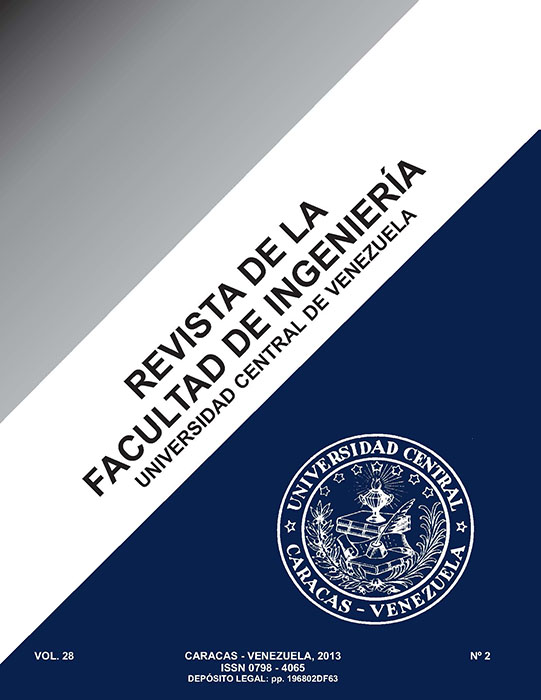TRANSFERENCIA DE MASA EN HIDROCARBUROS EN TUBOS CAPILARES: MODELO UNIDIMENSIONAL, TRANSITORIO Y DE FRONTERA MÓVIL / HYDROCARBON MASS TRANSFER IN CAPILLARY TUBES: 1D TRANSIENT MODEL WITH MOVING BOUNDARIES
Keywords:
Difusión de CO2, Capilares cuadrados, Frontera móvil, Recuperación mejorada, Mojabilidad.Abstract
Se modeló la difusión de CO2 en un hidrocarburo contenido en tubos capilares de vidrio, cilíndricos y cuadrados, resolviendonuméricamente un modelo matemático de difusión unidimensional y transitoria con frontera móvil. Los resultados delmodelo se validaron con datos experimentales de ascenso de la interfase líquido-gas, obtenidos al inyectar CO2 por laparte superior de un capilar, que contenía n-decano líquido. Los resultados muestran que la velocidad de ascenso de lafrontera es mayor en el capilar cuadrado y que el modelo se puede ajustar definiendo un parámetro de relación de flujoshidrocarburo/CO2 variable en el tiempo, que en el caso del capilar cuadrado representa la contribución de la presenciade la esquina con una relación de flujos negativa, cuyo significado es que los filamentos de líquido que se forman en laesquina del capilar cuadrado, inducen el movimiento del hidrocarburo en sentido opuesto al desplazamiento del CO2. Estehallazgo se extendió para los experimentos realizados por otro autor en n-heptano, n-octano y n-decano a otra presión ytemperatura. El efecto convectivo inducido por la esquina se incrementa para las cadenas de hidrocarburo más pequeñasy para las condiciones de presión y temperatura que aumenten la concentración de saturación del soluto, lo cual reduceel ángulo de contacto. Las máximas desviaciones encontradas en la posición de la interfase en capilar cuadrado fueron10,8%, para CO2/n-octano y 8,3% para CO2/n-heptano, ambas a 25°C y 1000 kPa, esta última contrasta con la desviación(33%) reportada por otro autor para el mismo experimento, con un modelo sólo para la fase líquida, con solución analíticay sin frontera móvil.
ABSTRACT
The diffusion of CO2 was modeled on a glass capillary tube, with cylindrical and square cross sections, filled with liquidhydrocarbon. A mathematical model of transient one-dimensional diffusion with moving boundary was numericallysolved. The model results were validated with experimental data of the rise of a liquid-gas interface, due to the injection ofCO2 at the top of a capillary tube filled of liquid n-decane. The results show that the rate of ascent of the boundary is greaterat the square capillary and that the model can be adjusted by defining a mass flux ratio parameter hidrocarbon/CO2 variablein time. For the square capillary case, it represents the contribution of the presence of a corner with a negative flux ratio,meaning that the liquid filaments formed in the corner of the square capillary induce the movement of the hydrocarbonin the opposite direction of CO2 movement. This finding was extended to the experiments performed by other author inn-heptane, n-octane and n-decane at different pressure and temperature. The convective effect induced by the corner isstronger for smaller hydrocarbon chains and in the case of specific pressure and temperature conditions that increase thesaturation concentration of the solute, which reduces the contact angle and increases the wettability on the solid. Themaximum deviations found in the position of the interface inside square capillary were 10.8% and 8.3% for CO2/n-octaneto CO2/n-heptane, both at 25°C and 1000 kPa. The latter is in contrast with the deviation (33%) reported by other authorsfor the same experiment based on a model only for the liquid phase, with analytical solution and without moving boundary.
Keywords: CO2 Diffusion, Square capillaries, Moving boundary, Enhanced oil recovery, Wettability.



